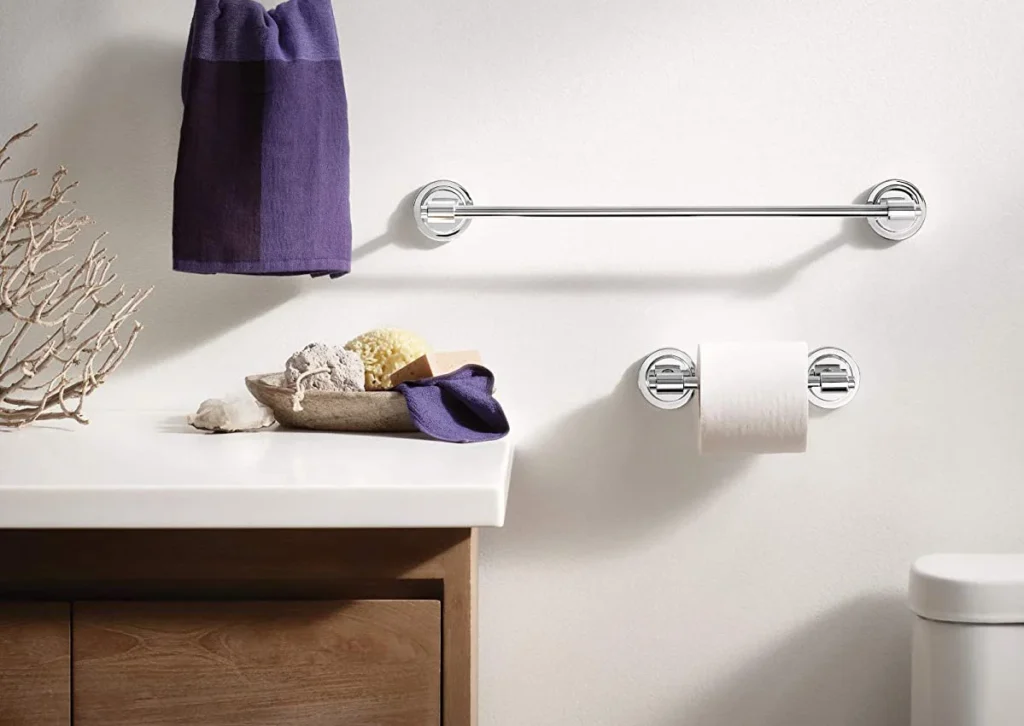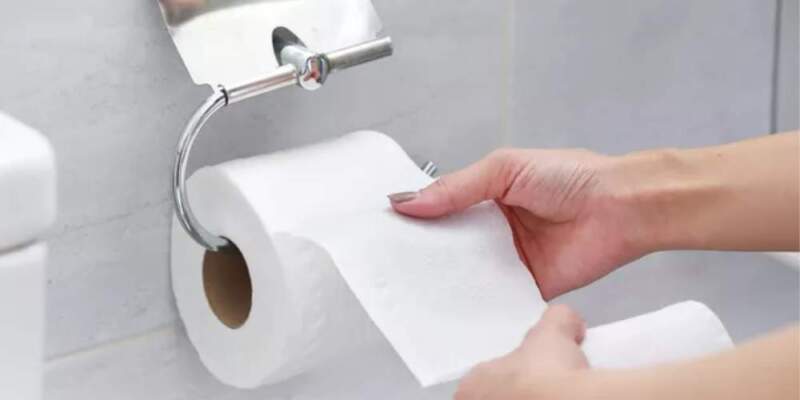Before we unravel the complexities of toilet paper hanging preferences, let’s take a moment to appreciate the multifaceted role of this humble bathroom essential. Toilet paper is not just a mundane product; it’s a cornerstone of personal hygiene and a symbol of our commitment to cleanliness. Its uses extend beyond the obvious – wiping away life’s little inconveniences. Toilet paper doubles as a tool for blotting, makeshift tissues, and even artistic endeavors for the creatively inclined (toilet paper origami, anyone?).
Why do we need toilet paper?
Toilet paper is more than just a practical necessity—it represents a social commitment to health and hygiene. The importance of toilet paper in preserving cleanliness at a time when personal hygiene is crucial cannot be emphasized. As we examine the subtleties of hanging toilet paper, let’s remember that this seemingly insignificant argument highlights our shared dedication to a hygienic and cozy restroom environment.
RELATED BLOG: WHAT TO PUT ON TOWEL RACK BESIDES TOWELS?-13 SMART WAYS
What are the ways to hang toilet paper?
The long-standing argument basically centers on whether the loose end is oriented beneath or over. Every strategy has advantages and can meet specific demands based on personal preferences.
RELATED BLOG:IS IT SAFE TO USE PAPER TOWEL HOLDER?-UNVEILING THE HIDDEN DANGERS
1- Over the Roll: The War on Convenience
The convenience that comes with hanging toilet paper with the loose end over the roll is cited by supporters. Imagine yourself reaching out and grabbing the loose end with ease, poised for a continuous, silky draw. This approach is praised for being easily accessible, particularly in public restrooms where user-friendliness is crucial. Users can easily access the loose end, which cascades beautifully over the front, making the experience hassle-free.
2- Under the Roll
However, there are others who have a contrary viewpoint and support hanging the toilet paper with the loose end under the roll. They contend that by minimizing the possibility of the paper rubbing against the wall, this technique may lessen contamination. This method attempts to establish a barrier between the paper and any surfaces that might be contaminated with germs, even though it might make gripping the end a little more difficult. Maintaining a perception of cleanliness requires conscious effort, especially in settings where hygiene is highly valued.
What is the Most Sanitary Way to Hang Toilet Paper?
As we navigate the ebb and flow of this great debate, it’s essential to recognize that the preference for how toilet paper should hang is deeply personal. There’s no one-size-fits-all answer, and the choice often boils down to individual habits, comfort, and even aesthetics. While, under position lowers the possibility that a child or domestic animal, like a cat, will unroll the toilet paper when they bat at the roll, and it may also lessen unrolling while driving in a recreational vehicle. All of these benefits contribute to a more tidier appearance.
A study published in the Journal of Environmental Health Engineering found that the over orientation significantly reduces the chance of bacterial contamination. The research demonstrated that this method minimizes contact between the toilet paper and adjacent surfaces, enhancing overall sanitation levels.
However, according to research, 70% of people find solace in the convenience of an overhang, while others prioritize the potential reduction of contamination offered by an underhang.
The toilet paper issue is a curious thread that permeates our everyday lives, woven into the larger fabric of bathroom routines. It’s a discussion starter, a playful argument that, in its simplicity, captures our varied viewpoints and personal tastes. So let’s explore the intricacies of the great toilet paper controversy, regardless of your side—Team Over or Team Under—while keeping a sense of humor, respecting individual liberties, and ensuring that everyone may use the restroom in a clean and pleasant manner. Ultimately, the manner in which we hang our toilet paper is but one more peculiar detail in the vast array of human customs.

Debunking Myths: Dispelling Misconceptions About Toilet Paper
Myth 1: Toilet Paper Orientation Doesn’t Matter
Contrary to popular belief, the orientation of toilet paper can significantly impact hygiene. The scientific evidence supporting the over-orientation is compelling, emphasizing the importance of this seemingly minor detail.
Myth 2: All Toilet Papers Are Created Equal
Not all toilet papers are equal in terms of quality and hygiene. Choosing a reputable brand that prioritizes cleanliness can make a substantial difference in your restroom experience.
In conclusion, the most sanitary way to hang toilet paper is the over orientation. Supported by scientific research and practical considerations, this method minimizes the risk of contamination and enhances overall hygiene in restrooms.
FAQs
Which way should a toilet roll holder face?
The orientation of a toilet roll holder is a matter of personal preference and convenience, and there isn’t a strict rule governing which way it should face. The two main options are having the loose end of the toilet paper hang over the top or allowing it to hang under the roll.
What is the best way to put toilet paper?
For Over the Top, many people consider placing the loose end over the top of the roll to be the more convenient and accessible option. This orientation allows the loose end to be easily visible and within reach. Users can quickly grab the end that hangs over the top, making it a straightforward and user-friendly choice.
For Under the Roll, some individuals prefer placing the loose end under the roll. Advocates for this orientation often cite aesthetics and a perceived neater appearance. While it may be considered less convenient by some, those who prefer the underhang appreciate the potential reduction in the chances of the toilet paper touching the wall.


